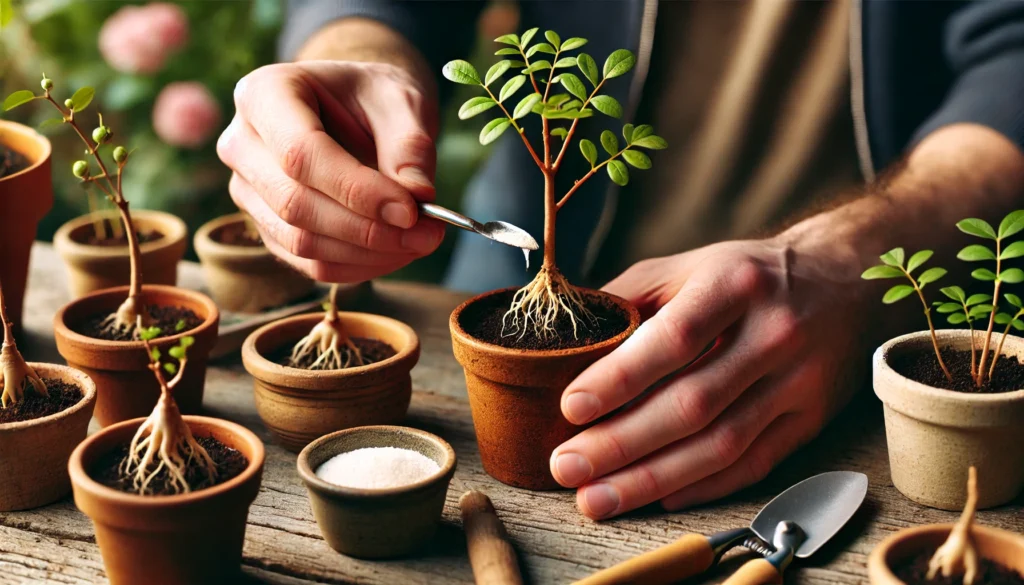
Best Rooting Hormone for Plant Cuttings: Top Picks for Successful Propagation
If you’re looking to boost your success rate with plant propagation, using the best rooting hormone for plant cuttings can make all the difference. Rooting hormone encourages faster, healthier root growth, giving your cuttings the best possible start. Whether you’re a beginner or an experienced gardener, choosing the right rooting hormone can be overwhelming with so many options available. In this guide, we’ll walk you through the top picks for rooting hormones, explain how they work, and help you choose the best one for your plant cuttings. Let’s dive in and take your propagation skills to the next level!
Table of Contents
ToggleWhat is Rooting Hormone and How Does It Work?
Rooting hormone is a powerful tool used to stimulate root growth in plant cuttings. It’s a compound that promotes the formation of roots, making the propagation process faster and more successful. Rooting hormones typically contain either auxins, which are natural plant hormones, or synthetic versions that mimic their effects.
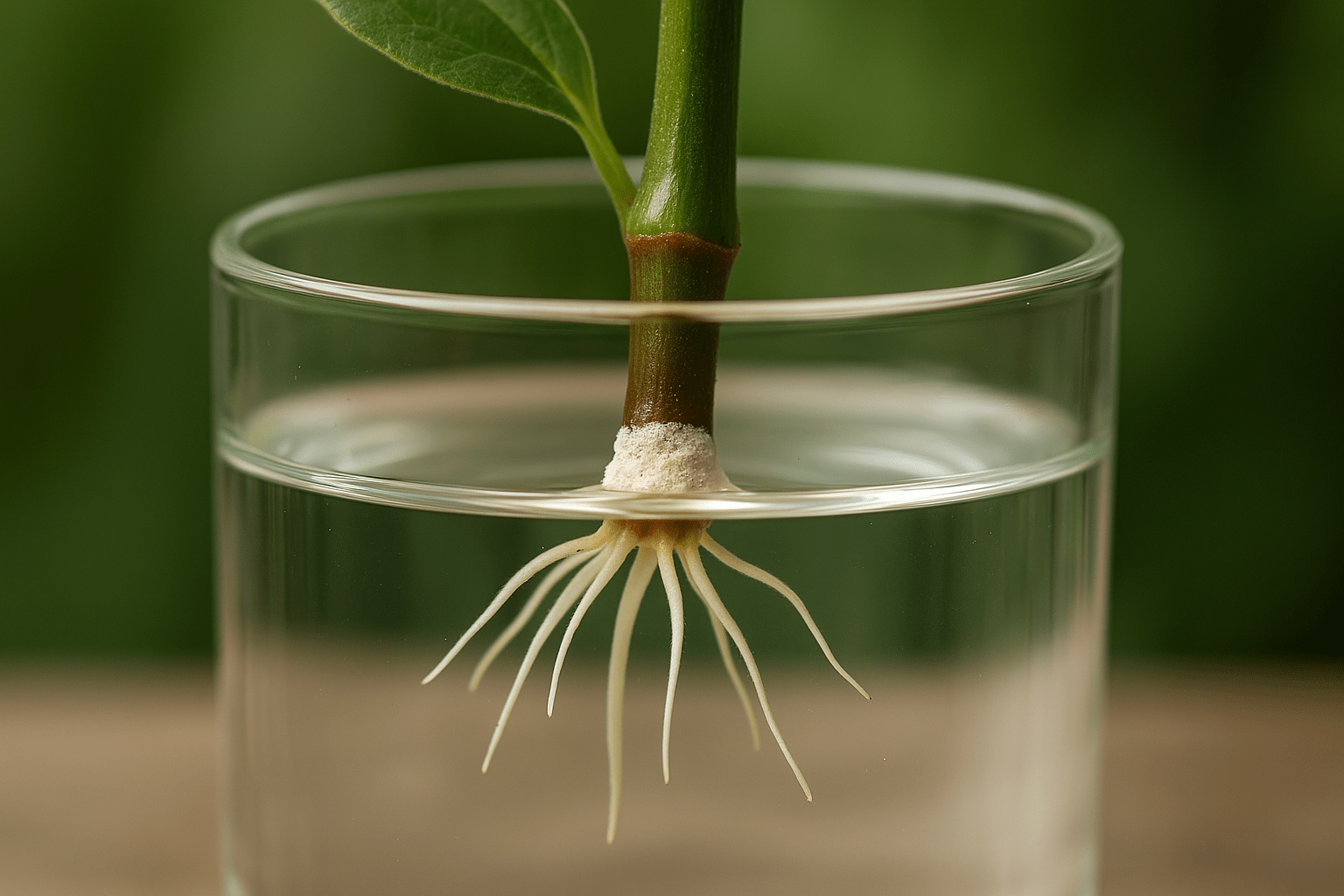
When you apply rooting hormone to a cutting, it encourages the cells at the base of the stem to develop into roots. This helps the cutting establish itself more quickly and reduces the chances of rot or failure during the rooting process. The hormone works by stimulating the plant’s natural healing process, allowing it to focus on growing roots rather than struggling to repair the cut.
Rooting hormone comes in several forms—powder, gel, and liquid. The most common type is powder, which is easy to apply and helps ensure that the cutting has adequate contact with the hormone. Simply dip the end of the cutting in water, then into the hormone powder before planting it in soil or water.
Using rooting hormone can significantly increase your success rate when propagating plants, especially for those that are difficult to root. It’s particularly useful for woody plants, shrubs, and perennials, where root growth can otherwise be slow or inconsistent.
In summary, rooting hormone boosts root development, enhances your propagation efforts, and gives your plant cuttings the best chance to thrive.
Types of Rooting Hormones
Rooting hormones are crucial when propagating plants, as they help stimulate root growth and improve success rates. Here are the main types of rooting hormones and how they work:
Auxin-Based Hormones (IBA and NAA)
The most common and effective rooting hormones are based on auxins like Indole-3-butyric acid (IBA) and Naphthaleneacetic acid (NAA). These compounds encourage root cell development and promote stronger, faster root systems. They are available in various forms, such as powders, gels, or liquids, and are widely used for both softwood and hardwood cuttings.
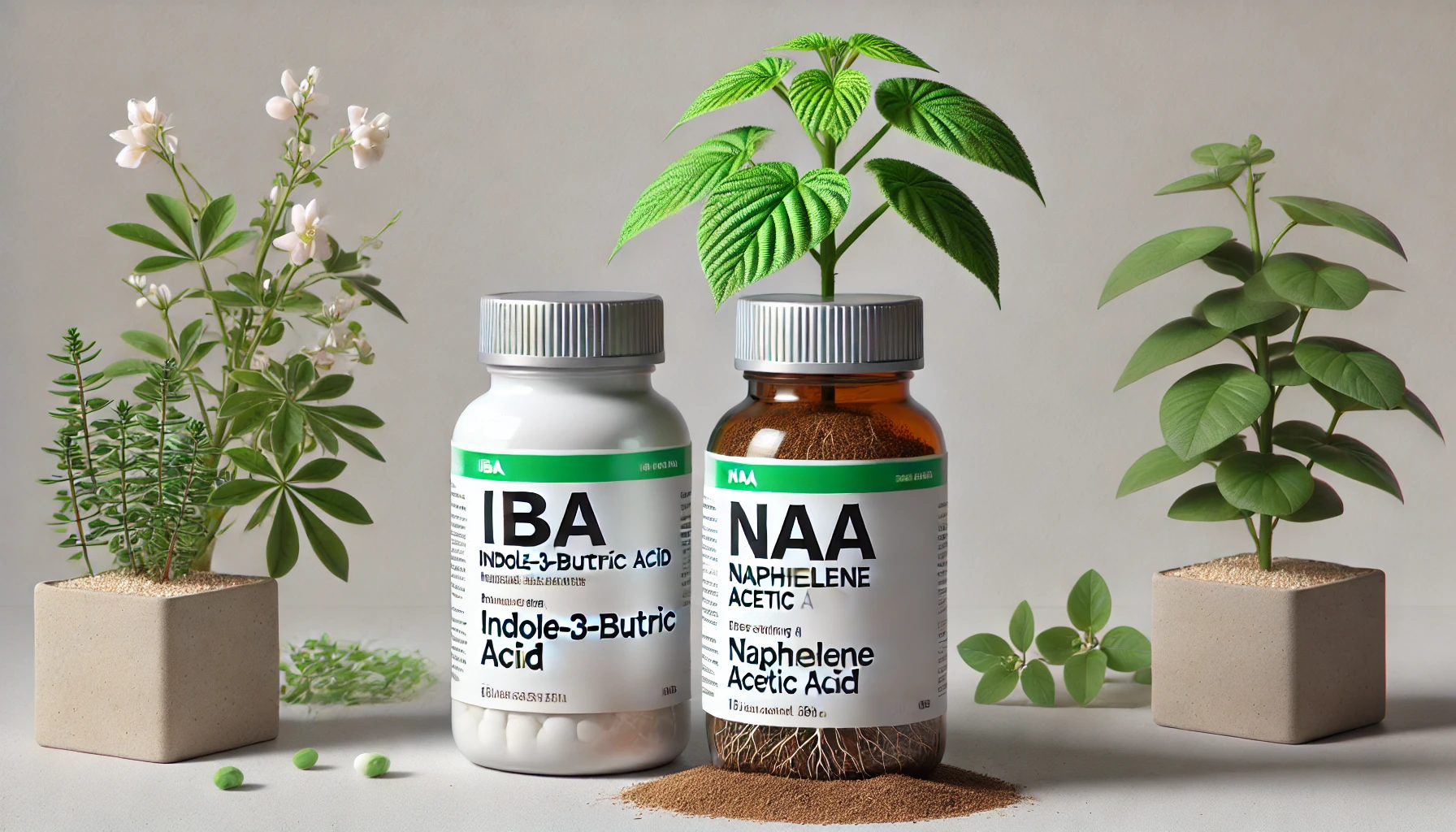
Cinnamon (Natural Rooting Hormone)
Cinnamon is a natural rooting agent that contains compounds known to promote root growth and prevent fungal infections. While not as powerful as synthetic hormones, it’s an excellent, chemical-free option for those who prefer organic propagation methods.
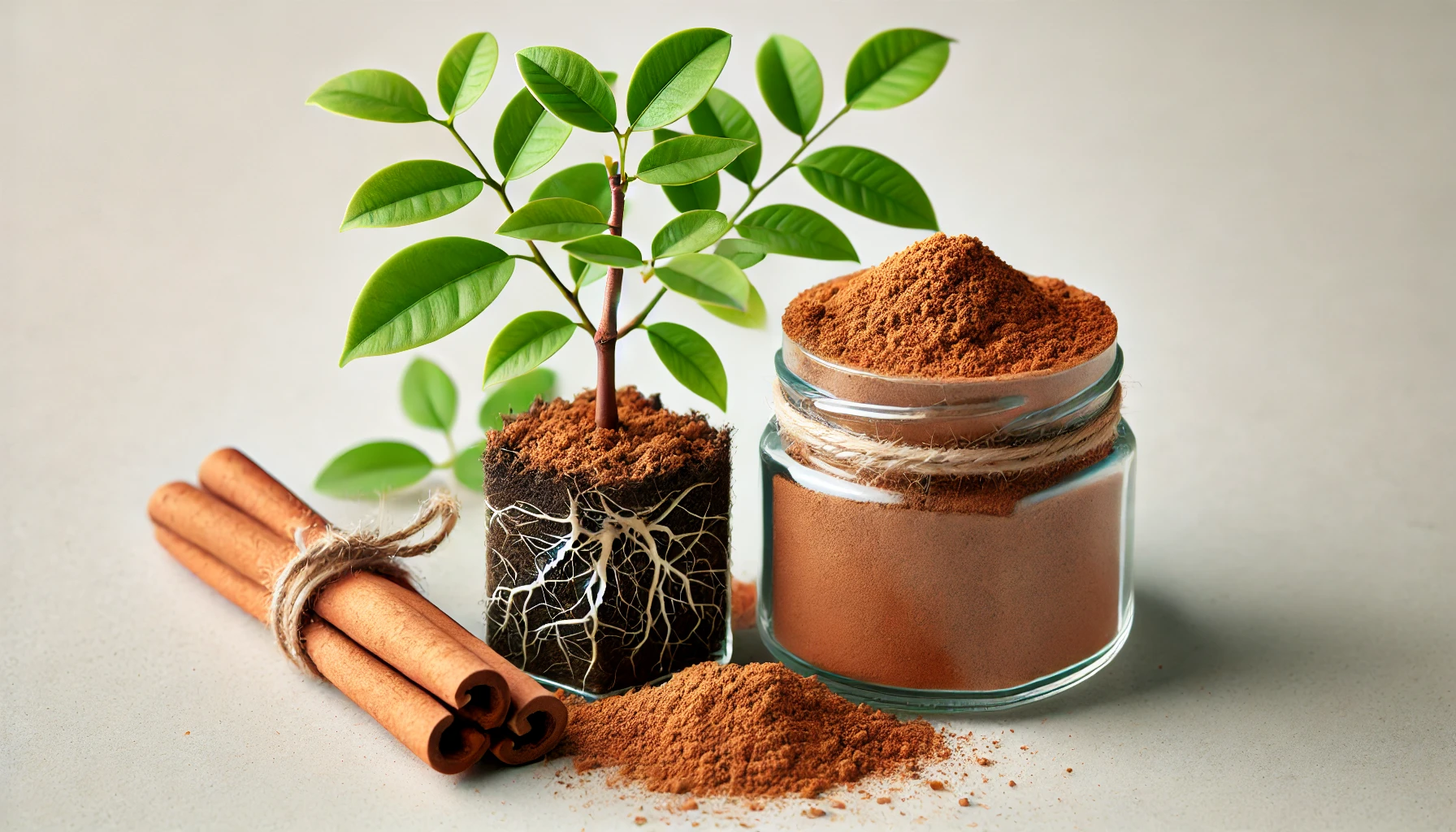
Willow Water (Natural Rooting Hormone)
Willow trees contain natural auxins, and soaking cuttings in willow water can stimulate root formation. This homemade solution is an eco-friendly alternative to synthetic rooting hormones and works best for woody plants.
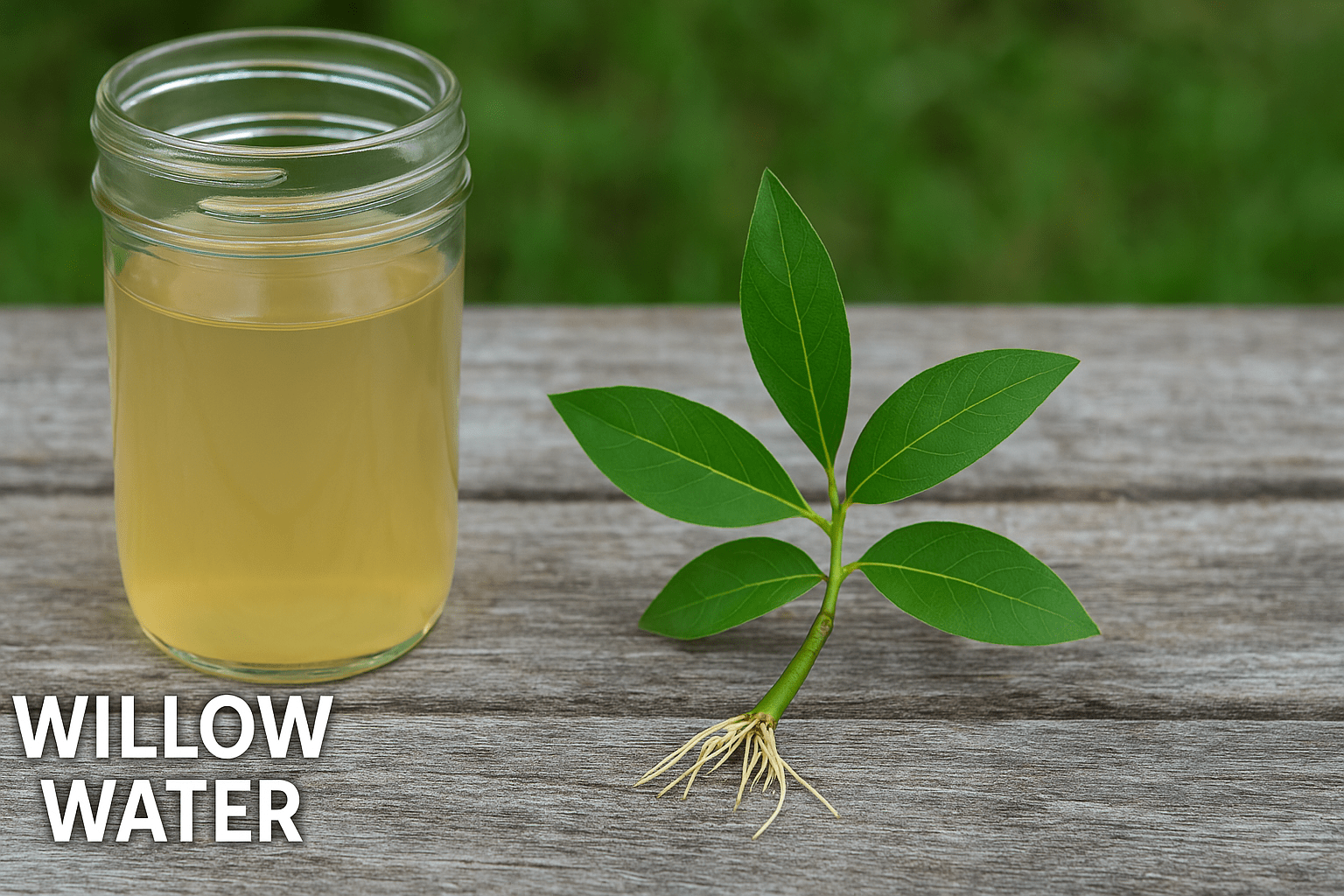
Clonex Gel
Clonex is a popular gel-based rooting hormone that provides a high concentration of IBA. It’s easy to apply, reducing the risk of over or under-application, and helps cuttings develop strong roots more quickly. Ideal for more difficult-to-root plants, Clonex ensures the right amount of hormone is delivered directly to the cutting.
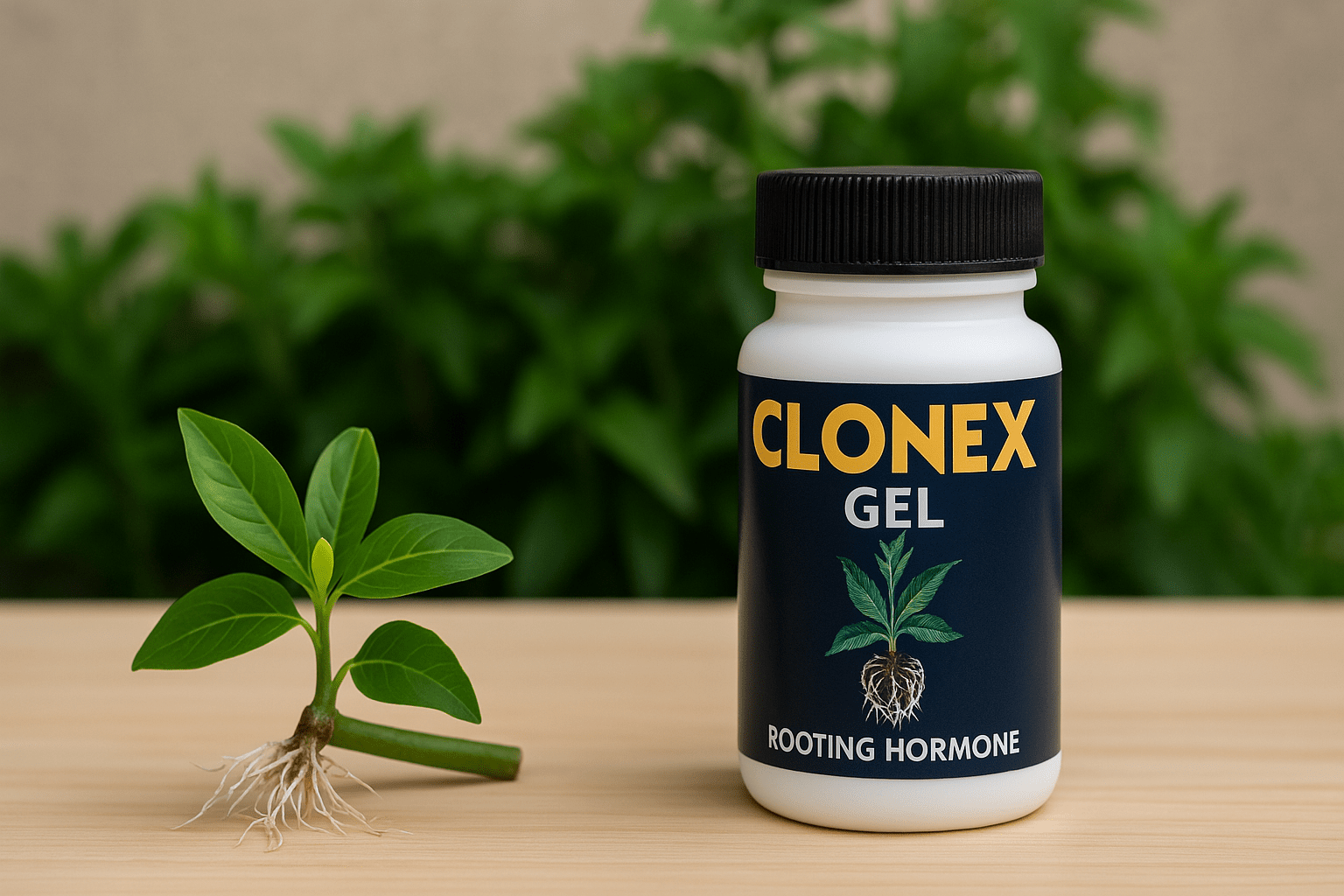
Each type of rooting hormone has its benefits, so choose one based on the plant type, your preference for natural or synthetic products, and the propagation method you’re using. Whether you use a commercial product or a natural alternative, rooting hormones can significantly boost your chances of successful plant propagation.
Factors to Consider When Choosing a Rooting Hormone
Selecting the right rooting hormone can significantly enhance your plant propagation success. Here are the key factors to consider when choosing the best product for your needs:
Type of Plant
Different plants respond to rooting hormones in various ways. Some species, like woody plants, may require a stronger rooting hormone (such as a high concentration of IBA), while others, like softwood cuttings, may benefit from a milder formula. Always choose a hormone suitable for the specific plant type you’re propagating.
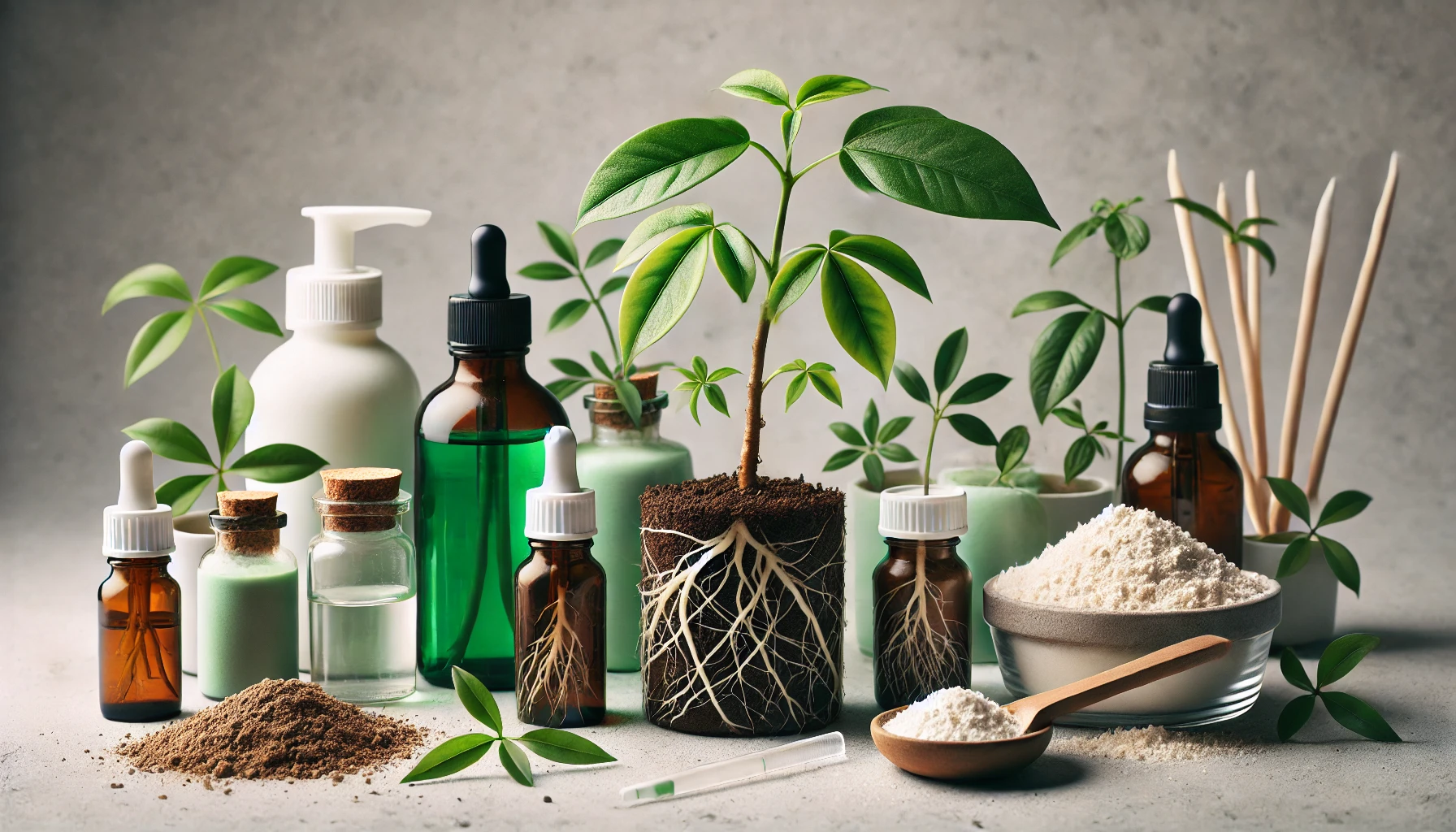
Formulation
Rooting hormones are available in several forms: powders, gels, and liquids. Powders are the most common and easy to apply, but gels and liquids can be more convenient for certain types of cuttings. Gels tend to be mess-free and easy to control, making them ideal for smaller cuttings.
Concentration of Active Ingredients
Rooting hormones usually contain active ingredients like IBA (Indole-3-butyric acid) or NAA (Naphthalene acetic acid). Higher concentrations of these hormones encourage faster root development but may not be necessary for all plants. Choose a hormone with the appropriate concentration based on the plant’s needs and your experience level.
Ease of Use
Consider how easy the rooting hormone is to apply. Some products come with a built-in applicator, making it easier to coat the cutting evenly. If you’re new to plant propagation, look for products that are user-friendly and require minimal steps.
Environmental Impact
Look for natural or organic rooting hormones if you prefer an eco-friendly option. These often use plant-based ingredients that are gentle on the environment while still promoting strong root growth.
By keeping these factors in mind, you can select the right rooting hormone to boost your propagation efforts, ensuring healthy roots and successful plant growth.
Top Picks for the Best Rooting Hormones for Plant Cuttings
Using a rooting hormone can significantly improve your success rate when propagating plant cuttings. Here are the top picks for the best rooting hormones to help encourage strong, healthy root development:
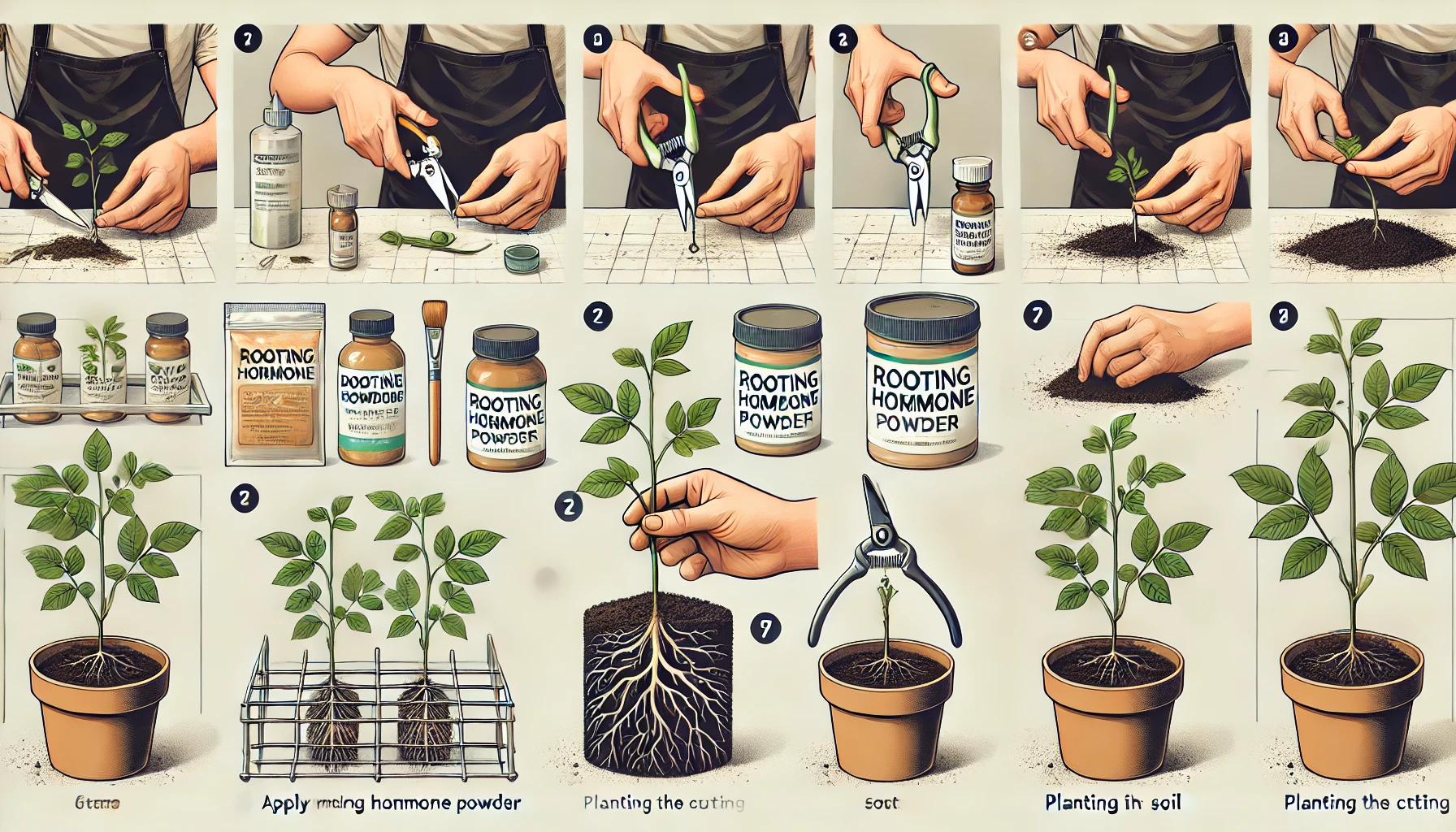
Clonex Rooting Gel
Clonex is a popular and effective rooting gel that provides excellent moisture retention. It’s especially ideal for softwood and semi-hardwood cuttings. The gel creates a barrier that helps protect the cutting from drying out while promoting root growth.
Rootone Rooting Powder
This easy-to-use powder is one of the most trusted options for rooting. It’s particularly effective for woody plants and provides a quick, efficient root formation. Rootone also helps prevent fungal infections, making it a great all-around option.
Dip ‘N Grow Liquid Rooting Hormone
A highly concentrated liquid, Dip ‘N Grow is known for its effectiveness with a wide range of plants. It’s great for both softwood and hardwood cuttings. The liquid form ensures even application and can be diluted to suit different plant types.
Hormex Rooting Powder #8
Hormex Rooting Powder is ideal for general propagation needs. It works on a wide variety of plants, including shrubs, trees, and houseplants. Its natural ingredients promote strong root growth and prevent transplant shock.
Superthrive Vitamin Solution
Although not a traditional rooting hormone, Superthrive provides essential vitamins and hormones that help cuttings thrive. It encourages both root and shoot development, making it a great supplement for struggling cuttings.
By selecting the right rooting hormone for your specific plant cuttings, you’ll increase your chances of successful propagation and enjoy faster, healthier root growth.
How to Use Rooting Hormone for Best Results
Rooting hormone can significantly enhance your success when propagating plants, helping to stimulate faster and stronger root growth. Here’s how to use it effectively for the best results:

Choose the Right Type of Rooting Hormone
Rooting hormones come in three main forms: powder, gel, and liquid. Powder is the most common and easy to use. Choose a hormone suitable for the type of plant you’re propagating, as some plants respond better to specific hormones (e.g., auxin-based formulas).
Prepare Your Cuttings
Before applying rooting hormone, make sure your plant cuttings are healthy. Trim the cutting just below a leaf node, removing any excess leaves that might touch the soil or water. This ensures better root development.
Dip the Cutting in Rooting Hormone
Gently dip the cut end of your plant cutting into the rooting hormone powder or gel. Tap off any excess to avoid clumping. Only the bottom part, where you want roots to form, should be coated.
Plant Immediately After Application
After applying rooting hormone, place the cutting into the soil or water without delay. This helps the hormone start working immediately and encourages root growth.
Maintain Optimal Conditions
For best results, keep your cuttings in a warm, humid environment. Mist regularly to maintain moisture levels, but avoid overwatering, which can cause rot.
Avoid Overuse
More is not always better. Excess hormone can hinder root growth or damage the cutting. Apply just enough to coat the bottom of the stem.
By following these steps, you’ll give your plant cuttings the best chance to form healthy, strong roots, increasing your success rate in propagation.
Common Mistakes to Avoid When Using Rooting Hormone
Using rooting hormone can boost your chances of successful propagation, but it’s essential to use it correctly. Here are the common mistakes to avoid for the best results:
Overusing Rooting Hormone
More isn’t always better. Applying too much rooting hormone can burn the cutting or inhibit root growth. Just dip the cutting’s tip into the powder or gel—enough to cover the wound lightly. A small amount is all you need.
Not Preparing the Cutting Properly
Before applying rooting hormone, make sure the cutting is clean and the cut is fresh. Avoid applying the hormone to old, dried-out cuttings. Cut the stem just below a node to encourage new growth.
Using Expired Rooting Hormone
Rooting hormone has a shelf life, and expired products may lose effectiveness. Always check the expiration date on the package and store the hormone in a cool, dry place to maintain its potency.
Skipping the Water Dip
Before dipping the cutting into rooting hormone, it should be moist. A dry cutting won’t allow the hormone to stick properly. Lightly dip the cutting in water first, then apply the hormone for better adhesion and better results.
Not Using Sterile Tools
Using dirty tools can introduce bacteria to your cutting, increasing the risk of infection or rot. Always use sterile scissors, knives, and containers when handling your cuttings and rooting hormone.
By avoiding these mistakes, you’ll give your cuttings the best chance to root successfully and grow into strong, healthy plants.
In conclusion, selecting the best rooting hormone for plant cuttings is a key step in ensuring your propagation efforts are successful. Whether you choose a powder, liquid, or gel hormone, the right product can significantly speed up the rooting process and help your cuttings grow into strong, healthy plants. By understanding the types of hormones available, the best methods of application, and the specific needs of your plants, you can achieve a higher success rate in your gardening projects. Don’t be afraid to experiment with different rooting hormones to see which one works best for your cuttings. With the right approach and a little patience, you’ll soon see your plant collection grow and thrive! Happy propagating!
Frequently Asked Questions(FAQ)
What is the best rooting hormone for plant cuttings?
The best rooting hormone for plant cuttings depends on the type of plant you’re propagating. For most general purposes, powdered rooting hormones with IBA (Indole-3-butyric acid) are a popular choice. For delicate plants, gel formulas or liquid hormones can be more effective. Be sure to match the rooting hormone to your plant’s needs.
How do I apply rooting hormone to plant cuttings?
To apply rooting hormone, dip the cut end of your cutting into the hormone powder, liquid, or gel. Tap off excess powder or gently wipe off extra liquid. For gel or liquid forms, a more controlled, even coat is recommended. Then, plant your cutting in your growing medium, whether it’s soil or water.
Can I use rooting hormone on all types of plants?
While rooting hormone is beneficial for many plants, it’s especially useful for hard-to-root varieties like woody shrubs, certain houseplants, and tropicals. Some plants, like succulents, can root just fine without hormone, but it can still speed up the process.
Should I use rooting hormone for softwood cuttings?
Yes, using rooting hormone for softwood cuttings can improve success rates, especially for plants that are known to be difficult to propagate. Softwood cuttings, typically taken in spring or early summer, will benefit from a quick root start provided by rooting hormone.
Is there a natural alternative to synthetic rooting hormones?
Yes! You can use natural alternatives like honey, cinnamon, or willow water as a substitute for synthetic rooting hormone. These natural options contain compounds that help stimulate root growth, though they may not be as fast-acting as commercial hormones.
How long should it take for cuttings to root with rooting hormone?
The time it takes for cuttings to root depends on the plant type and environmental conditions. With the help of rooting hormone, many cuttings will begin to show roots in about 2-6 weeks. Ensure the cutting is kept in a warm, humid environment for the best results.
Can I overuse rooting hormone?
Yes, overusing rooting hormone can harm your cuttings. Applying too much can result in poor root development or cause the cutting to rot. Always follow the instructions on the product and apply the hormone sparingly.
Can I use rooting hormone for plant cuttings in water?
Yes, you can use rooting hormone for cuttings propagated in water. Simply dip the cut end into the hormone before placing the cutting in water. This can help speed up the process, as the hormone encourages faster root growth even in a water-based environment.
